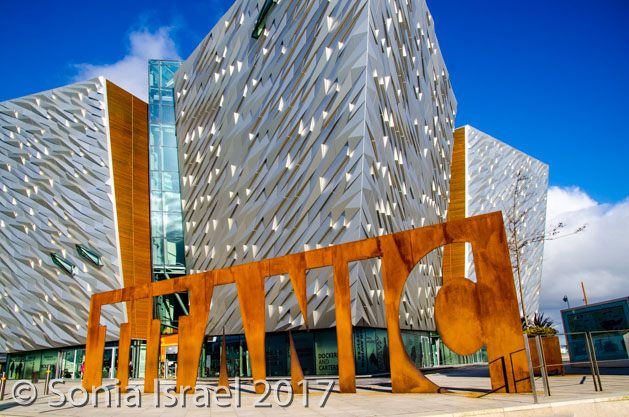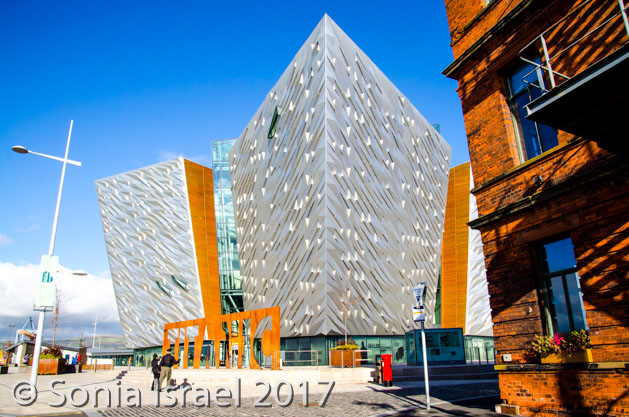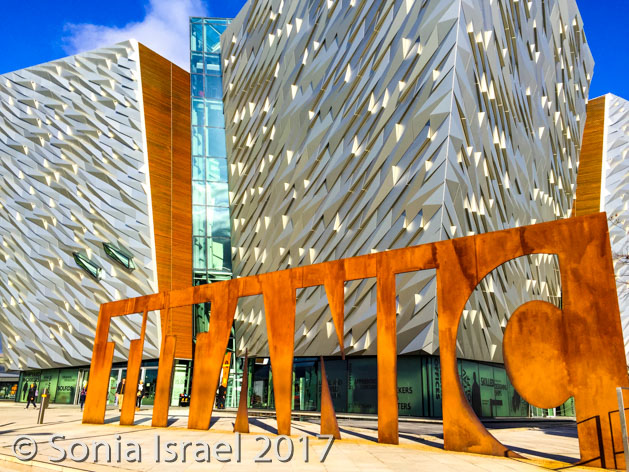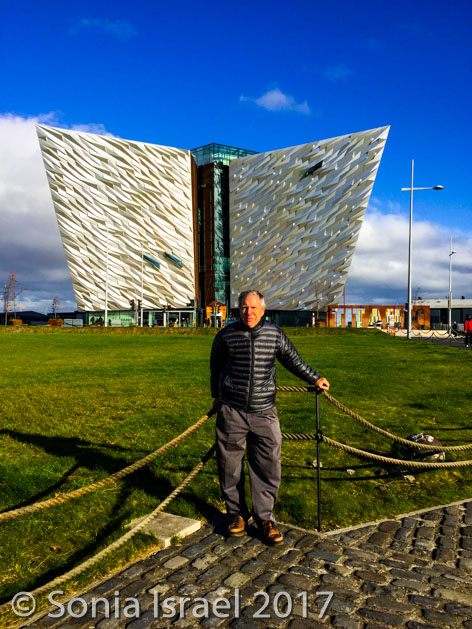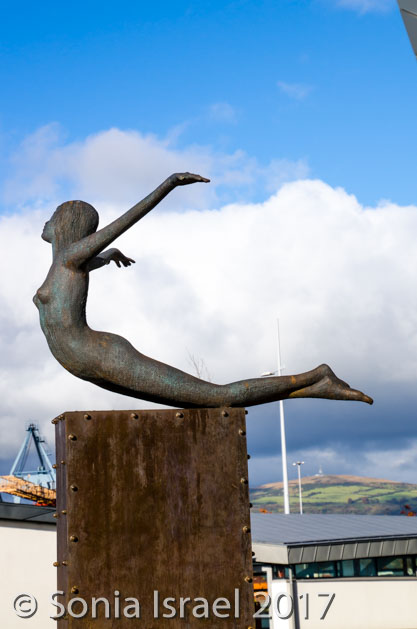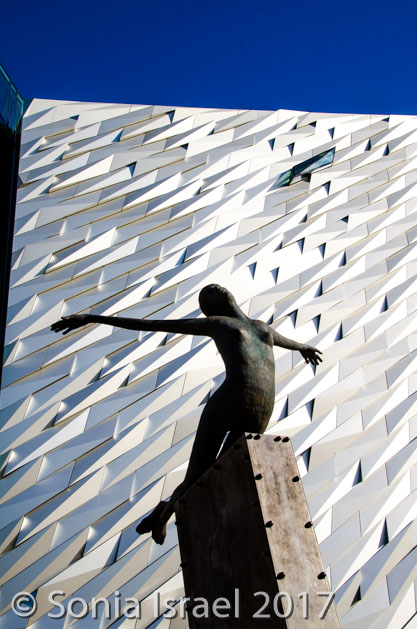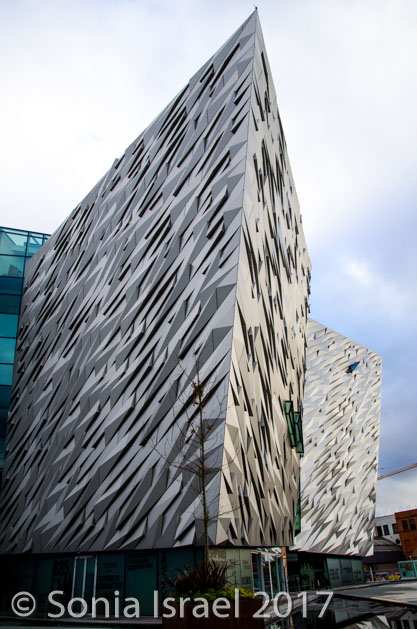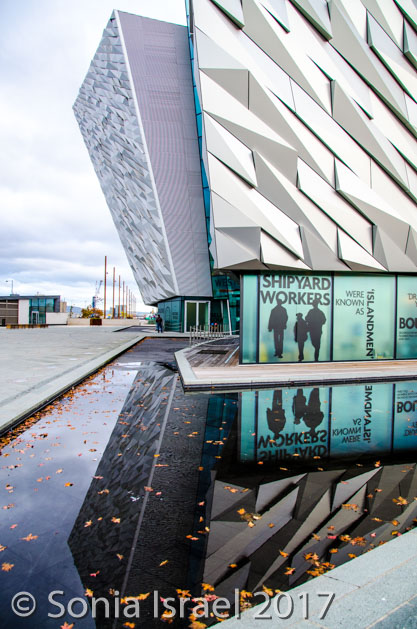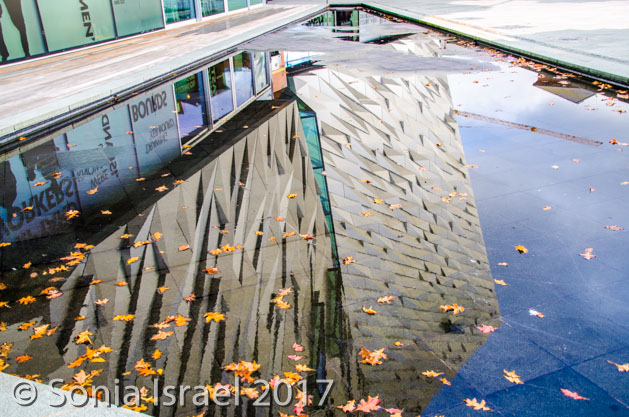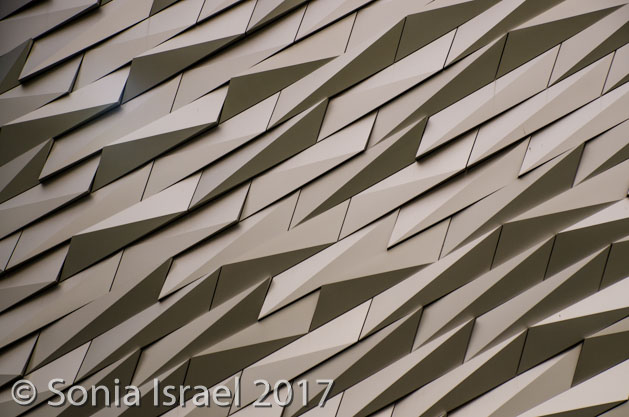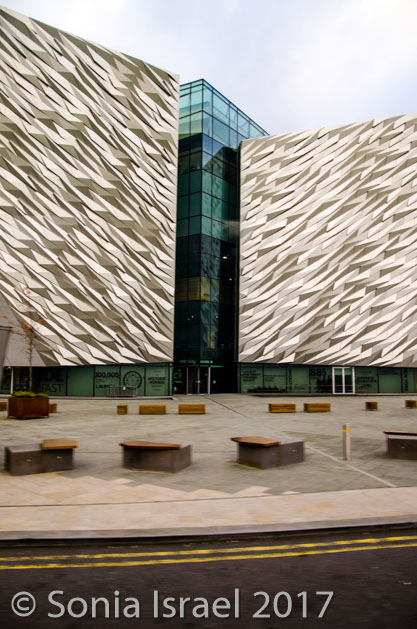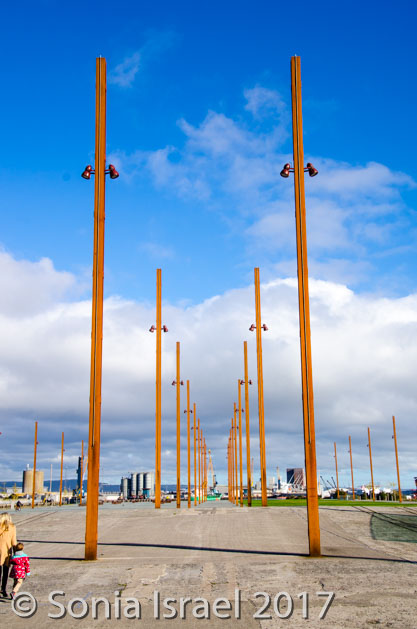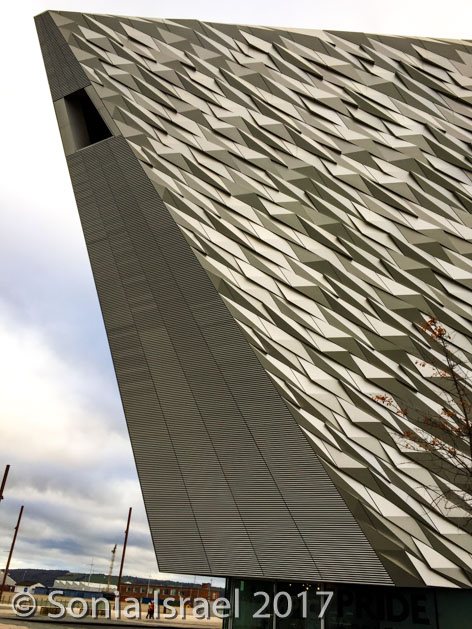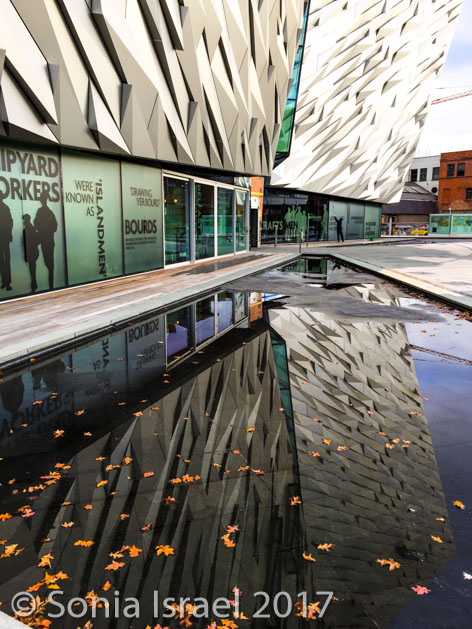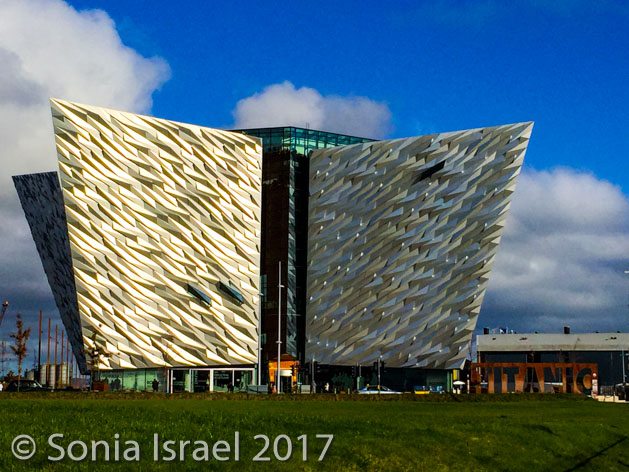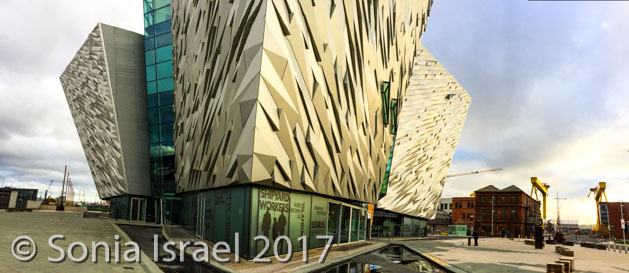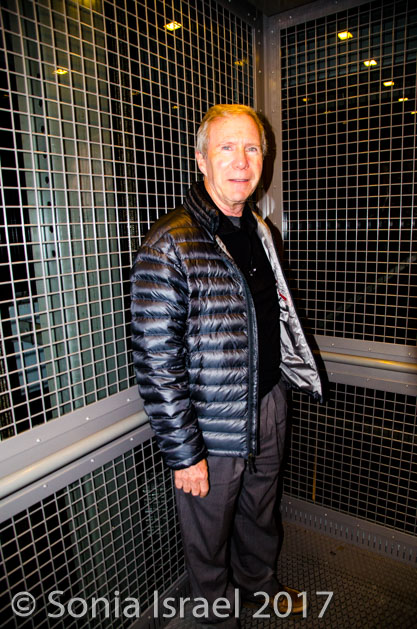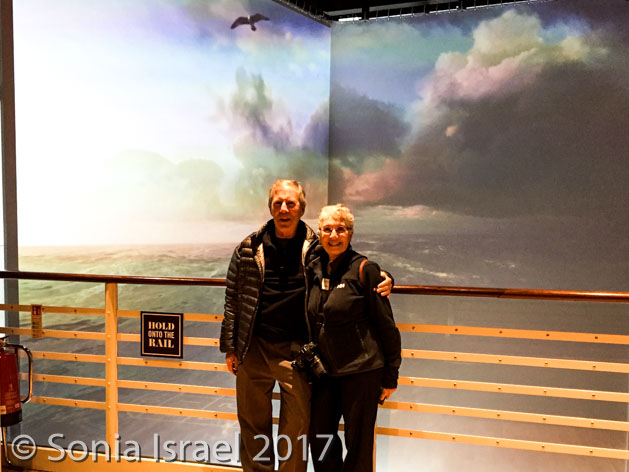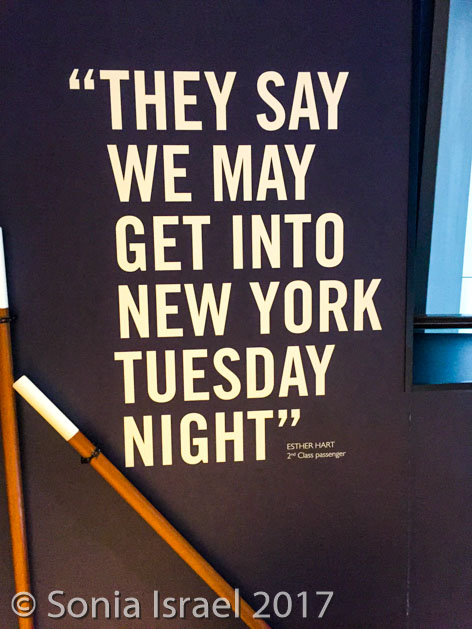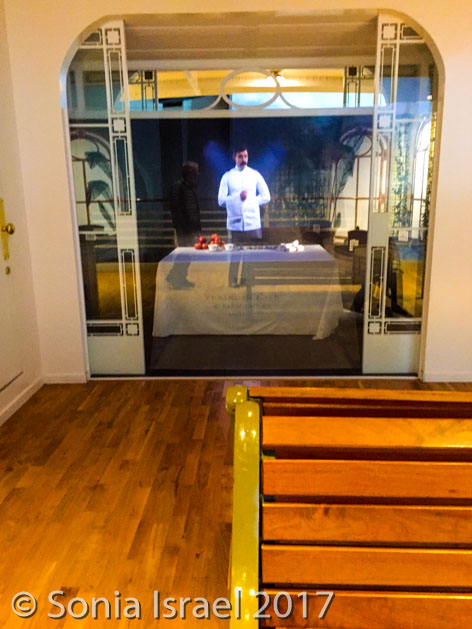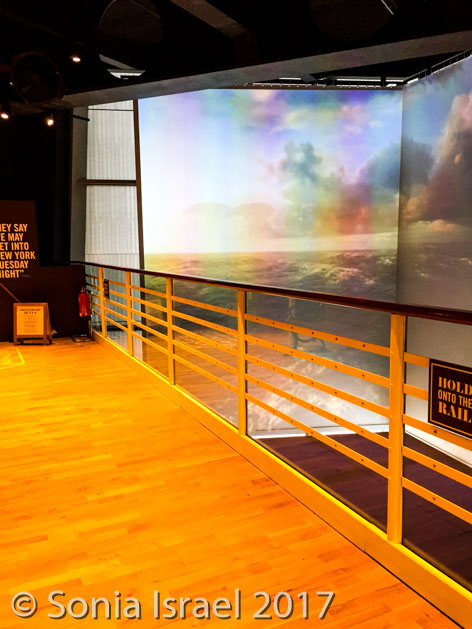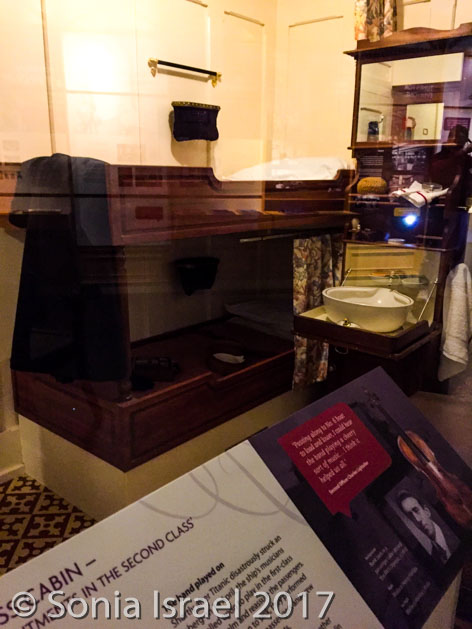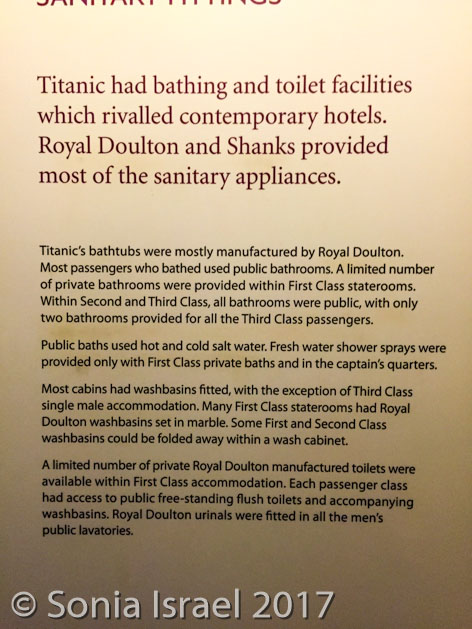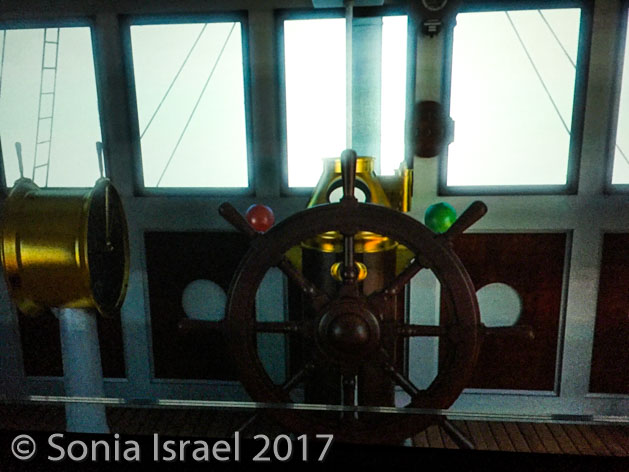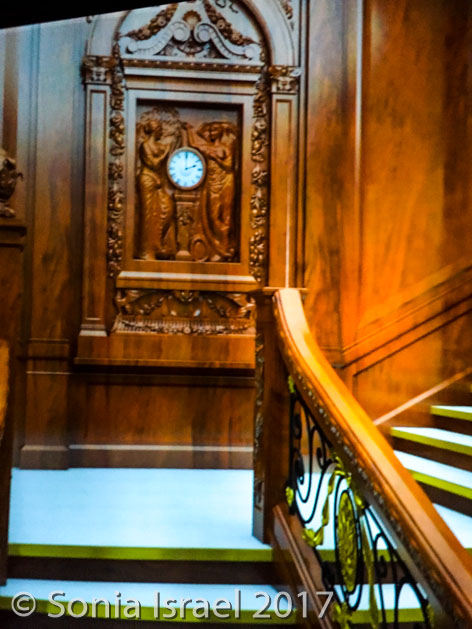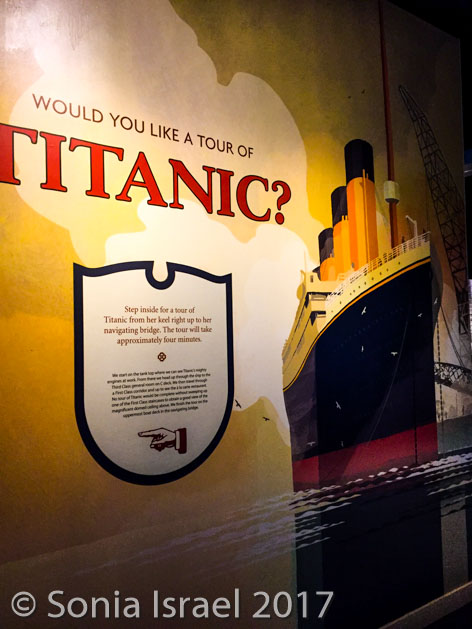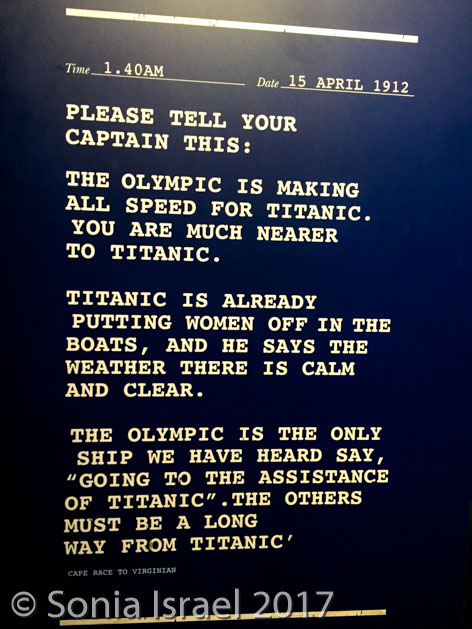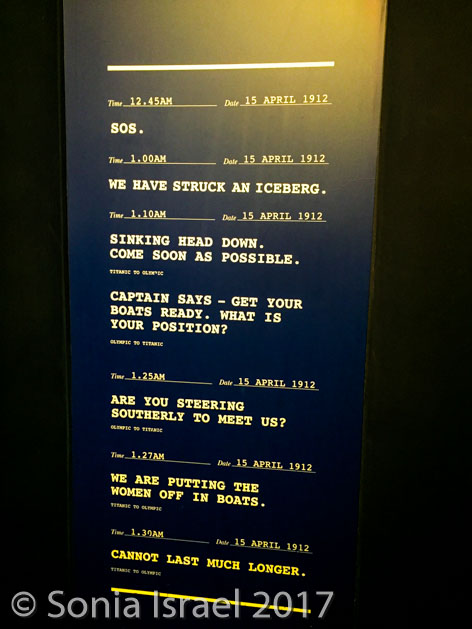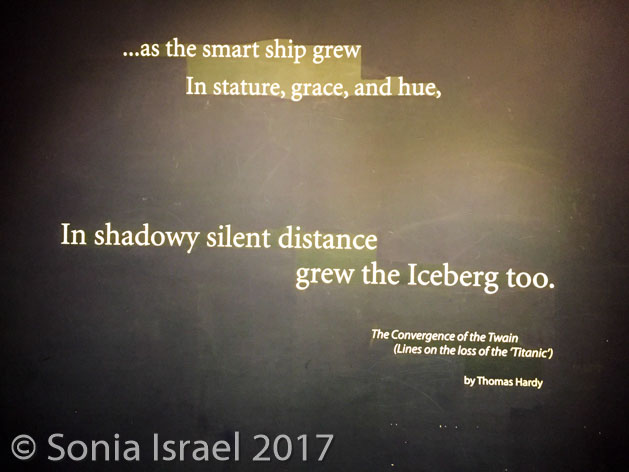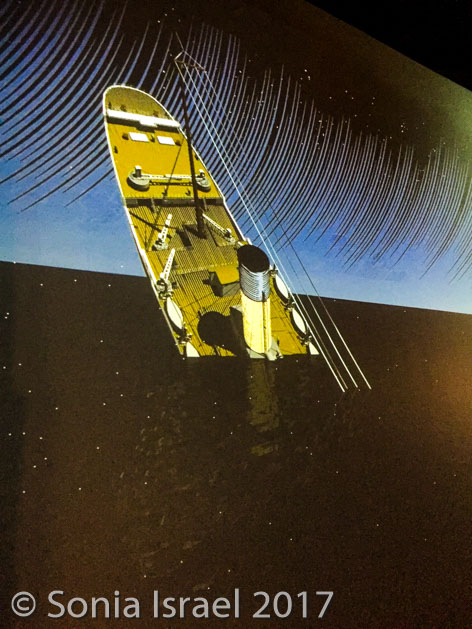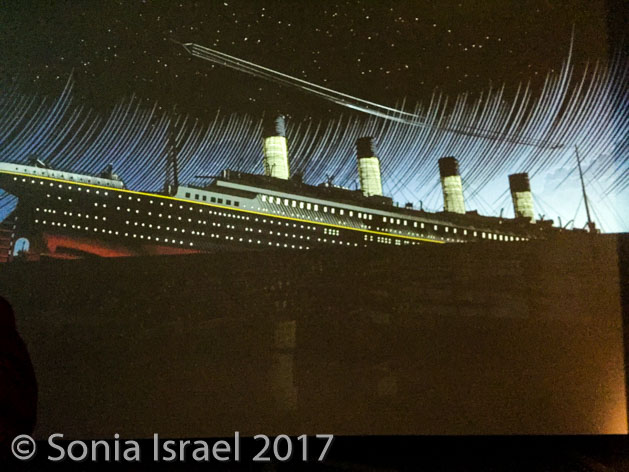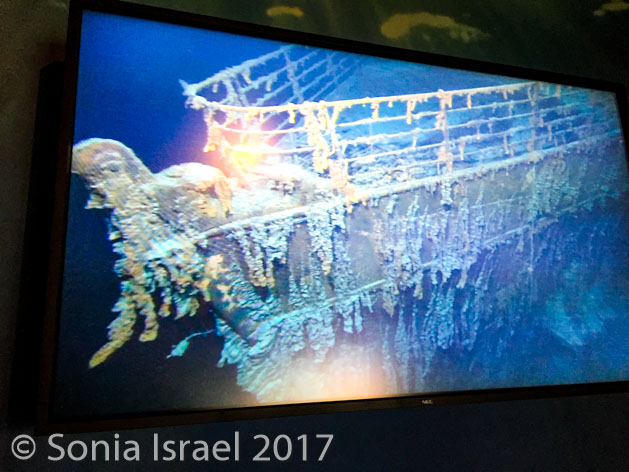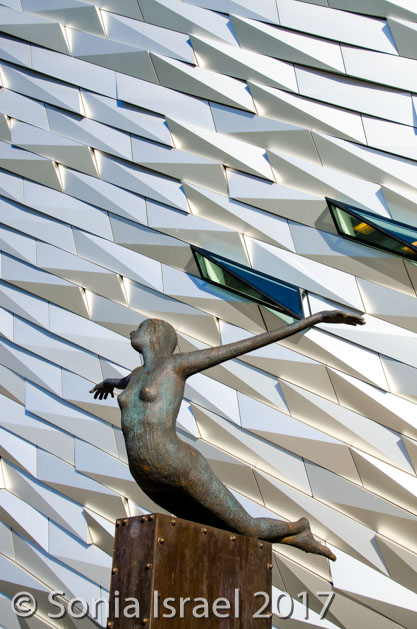Day 6, Monday October 24, 2016
The Titanic Museum
Our first major stop of our first full day in Belfast, was the Titanic museum, on the site of the former Harland and Wolff shipyard, where the Titanic and other ships were built (all ending in ic, like the Olympic or Britannic). It seems like that would not be particularly interesting but in fact it was an amazing museum which was beautifully done. The museum building itself is gorgeous with the design intended to reflect Belfast’s history of ship making and the industrial legacy left by Harland and Wolff. It was designed by Eric Kuhne and Associates. It is made up of three angles which look like the main prow of the ship. Some say it looks like an iceberg and the locals in fact call it “the iceberg.” It is covered in 3000 individual silver anodized aluminum shards standing 12 feet high, the same size as the Titanic’s hull.
- Showing the length of the Titanic
The museum itself is 130,000 sq ft of galleries which explore the design, the building of, the sinking and the legacy of the Titanic. You start by looking at scenes recreated from Belfast at the time of the construction of the Titanic, from 1909-11. This is when industry was at its peak. You learn about Belfast and how it became one of the largest industrial cities, starting with the women coming in from rural areas and developing the linen industry. Robe making and tobacco and whiskey were big industries too.
You go through the original Harland and Wolff shipyard gates and learn about the actual construction of the ship. You enter a moving car which takes you up a steel scaffold and listen to the voices of the men working night and day in the heat of the flames, building the Titanic. The next exhibit is of the launch on May 31, 1911, into Belfast Lough watched by over 100,000 people. You can look out of the window and see the slipway and docks where it all happened. Next you are on the ship. There is a 360-degree movie that tours you takes you from the engine room, up into the dining rooms, the grand staircase and the bridge. You see the different class cabins. The carpets. The wood.
- Inside steel cage elevator
- Standing on “the deck”
- Dining room entrance
- Deck
- Stateroom
- Description of bathrooms
- The bridge
- Grand staircase
- Dining room
And then you start hearing and reading the calls of distress. We hit an iceberg. SOS. You hear the voices of survivors telling their stories. And you watch the ship sink. Very dramatic. Very moving. Very sad.
The last gallery is the aftermath. There is a life-size replica of the lifeboats. There are videos and newspapers trying to explain what happened. There are the myths and the legends. And then there is a movie of the discovery of the wreck 12,000 feet under the Atlantic Ocean.
All in all, an amazing museum.
